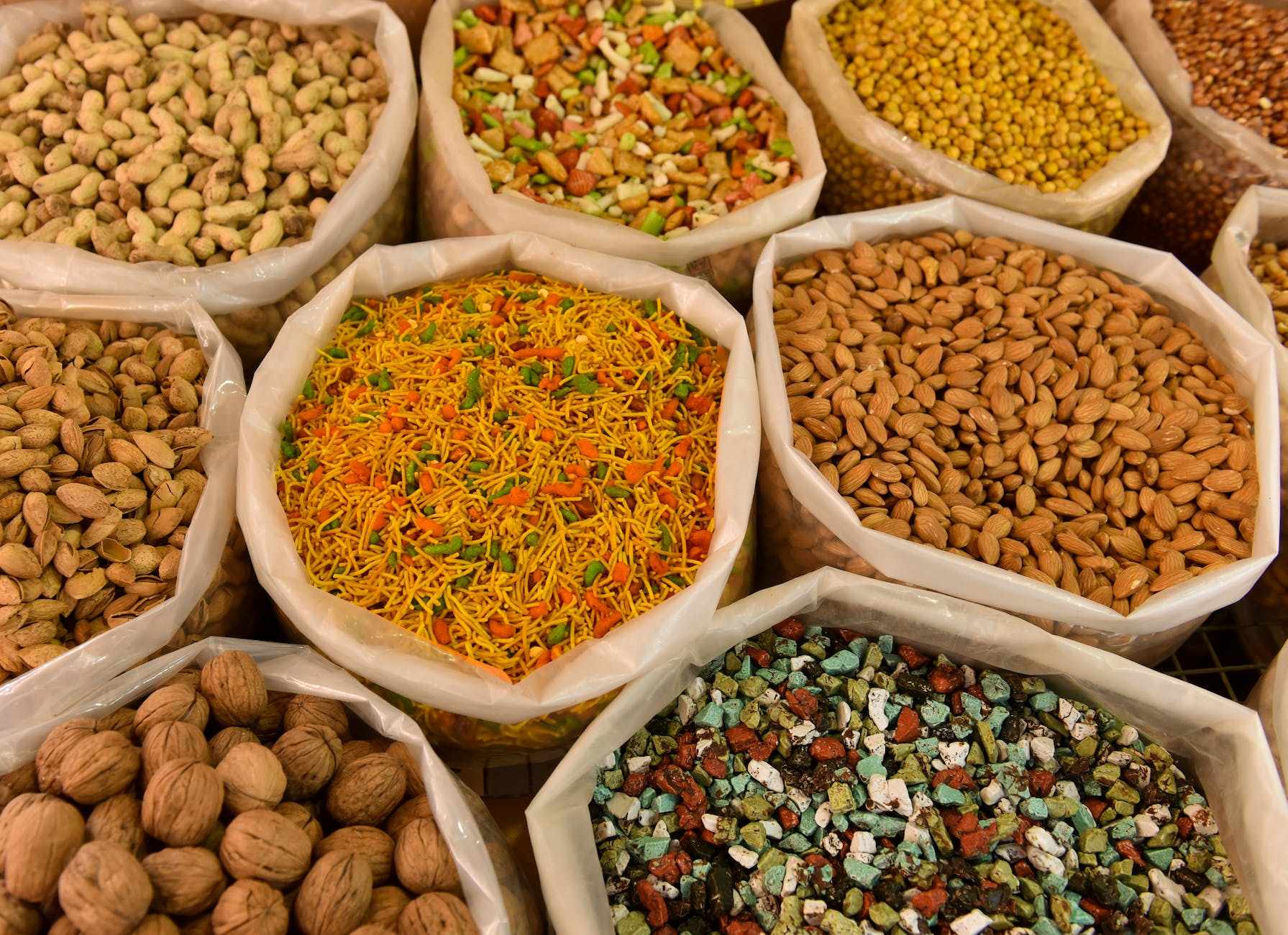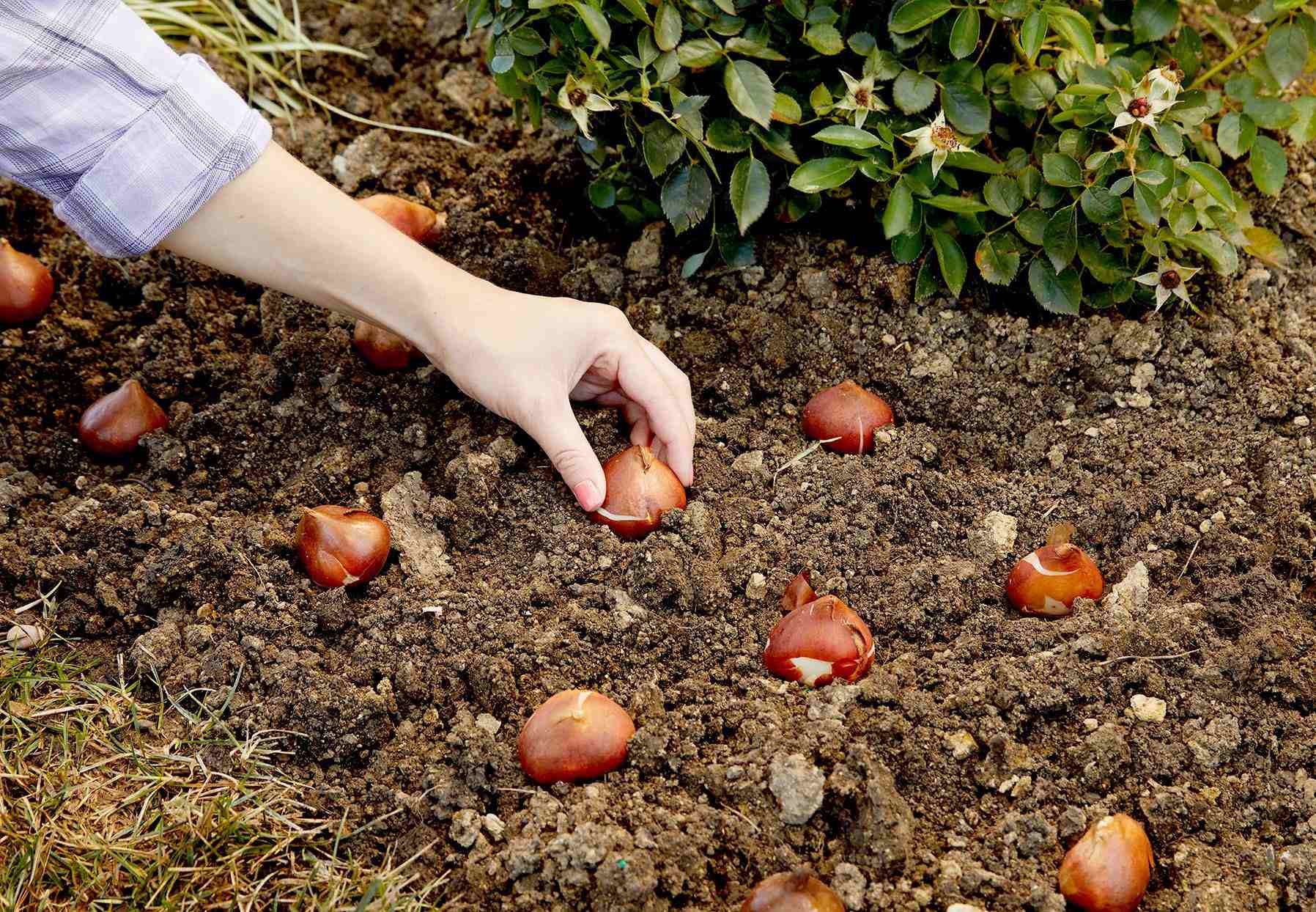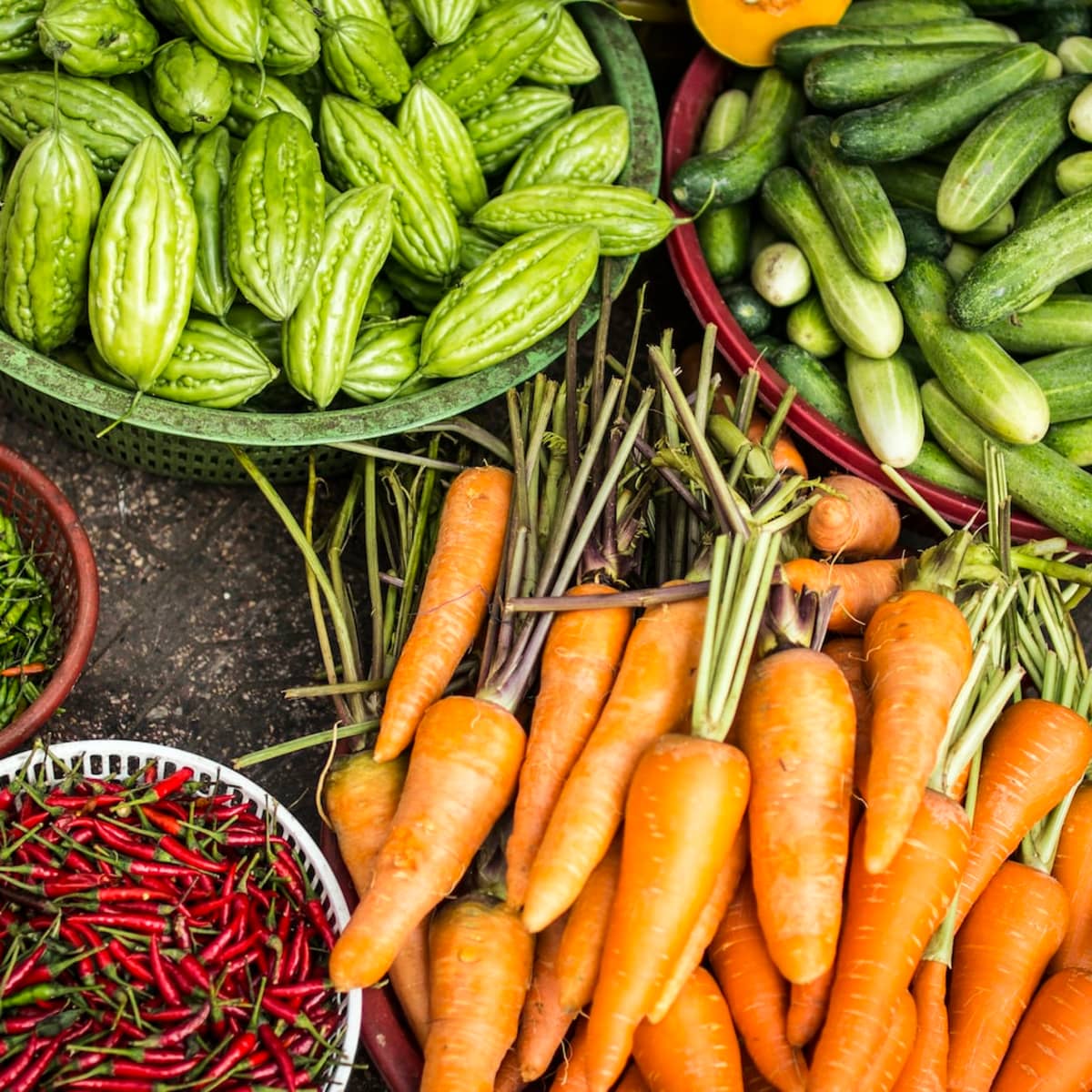Home>Types of Gardening>Ornamental Gardening>How Late Can You Plant Bulbs


Ornamental Gardening
How Late Can You Plant Bulbs
Published: January 21, 2024
Learn when it's best to plant bulbs for a stunning garden display. Get expert tips on ornamental gardening and late planting.
(Many of the links in this article redirect to a specific reviewed product. Your purchase of these products through affiliate links helps to generate commission for Chicagolandgardening.com, at no extra cost. Learn more)
Table of Contents
**
Introduction
**
Gardening enthusiasts often find themselves caught up in the hustle and bustle of life, causing them to miss the optimal planting window for their beloved bulbs. However, all is not lost for those who have yet to plant their bulbs. Late planting can still yield beautiful blooms if approached with the right techniques and considerations.
Late planting refers to the act of planting bulbs after the recommended window has passed. While it may seem like a gamble, with proper care and attention, late-planted bulbs can thrive and produce stunning flowers. Understanding the factors that influence late planting success, the types of bulbs suitable for late planting, and the techniques to employ can make all the difference in achieving a flourishing garden.
Gardening is a dynamic and rewarding pursuit, and late planting presents an opportunity to test one's skills and knowledge. By delving into the nuances of late planting, gardeners can expand their expertise and witness the resilience of nature. So, let's explore the world of late planting and uncover the secrets to bringing forth vibrant blooms even after the traditional planting window has closed.
Factors to Consider
Before embarking on the late planting journey, several crucial factors warrant consideration to maximize the chances of success. Understanding these elements can help gardeners make informed decisions and adapt their approach to suit the unique circumstances of late planting.
1. Soil Temperature and Moisture: Bulbs rely on conducive soil conditions to establish roots and thrive. Before late planting, assess the soil temperature and moisture levels. While cooler soil temperatures can slow down initial growth, adequate moisture is essential for root development. By ensuring the soil is neither too dry nor waterlogged, gardeners can create an optimal environment for late-planted bulbs to take root.
2. Frost and Winter Hardiness: Late-planted bulbs are particularly vulnerable to frost damage. It is vital to consider the local climate and the specific hardiness of the chosen bulb varieties. Some bulbs exhibit greater resilience to frost, making them more suitable for late planting in colder regions. Understanding the frost patterns and the bulbs’ ability to withstand chilly conditions is pivotal in safeguarding their growth prospects.
3. Day Length and Sun Exposure: The amount of sunlight and daylight length can influence the growth and flowering of late-planted bulbs. Assess the available sun exposure in the chosen planting area to ensure it aligns with the sunlight requirements of the selected bulb varieties. While some bulbs thrive in full sun, others prefer partial shade, making it essential to match the bulbs with suitable light conditions for optimal growth.
4. Bulb Quality and Storage: When purchasing bulbs for late planting, prioritize high-quality, healthy bulbs. Inspect the bulbs for firmness, absence of mold or rot, and signs of damage. Additionally, consider the storage conditions of the bulbs before purchase, as poorly stored bulbs may have reduced viability. Opting for fresh, well-preserved bulbs enhances the likelihood of successful late planting.
5. Species and Varieties: Different bulb species and varieties exhibit varying adaptability to late planting. Some bulbs, such as daffodils and snowdrops, are known for their resilience and capacity to thrive even when planted later than ideal. Conversely, certain delicate or finicky varieties may struggle to establish themselves if planted too late. Researching the specific characteristics and late planting tolerance of different bulb species and varieties can guide gardeners in making informed choices.
By carefully weighing these factors, gardeners can approach late planting with a strategic mindset, increasing the prospects of witnessing vibrant blooms despite the delayed planting schedule.
Types of Bulbs
When considering late planting, it is essential to select bulb varieties that are well-suited to this unconventional planting timeframe. Certain bulb types exhibit greater adaptability and resilience, making them prime candidates for late planting endeavors. Understanding the characteristics and requirements of different bulb types can aid in making informed choices and nurturing successful late-planted blooms.
1. Daffodils (Narcissus): Daffodils are renowned for their robust nature and ability to thrive even when planted later than the optimal window. These cheerful flowers come in a diverse array of colors and shapes, adding a delightful touch to late spring landscapes. Their resilience makes them an excellent choice for late planting, offering a reliable opportunity for vibrant blooms.
2. Snowdrops (Galanthus): Snowdrops are early-blooming bulbs that can tolerate late planting exceptionally well. Their delicate, nodding flowers emerge in late winter to early spring, often peeking through the snow, heralding the arrival of spring. Their adaptability to late planting makes them a charming addition to gardens, providing delicate blooms amidst the transitioning seasons.
3. Crocuses (Crocus): Crocuses are heralds of spring, offering a burst of color after the winter slumber. These hardy bulbs can thrive even when planted later than usual, gracing the garden with their vibrant hues. Their ability to naturalize and multiply further enhances their appeal for late planting, creating captivating displays in subsequent years.
4. Alliums: Alliums, with their striking spherical blooms, are versatile bulbs that can withstand late planting under the right conditions. Their architectural presence and ornamental value make them a sought-after choice for late-season interest. By selecting suitable allium varieties and providing conducive growing conditions, gardeners can enjoy their impressive blooms despite the delayed planting schedule.
5. Hyacinths (Hyacinthus): Hyacinths are known for their fragrant, densely packed florets and vibrant colors, infusing the garden with both visual appeal and captivating scents. While they typically benefit from fall planting, certain varieties can adapt to late planting, provided that the soil and climate conditions are favorable. Their aromatic presence and stunning blooms make them a desirable option for late-season planting endeavors.
By opting for bulb varieties known for their late planting adaptability, gardeners can embrace the opportunity to breathe life and color into their outdoor spaces, even after the traditional planting window has passed.
Planting Time for Different Bulbs
Understanding the optimal planting time for various bulb types is instrumental in orchestrating successful late planting strategies. While traditional wisdom emphasizes fall planting for most bulbs, latecomers can still partake in the gardening festivities by selecting bulbs that accommodate late planting schedules. By aligning the chosen bulb varieties with their respective planting timelines, gardeners can optimize the prospects of witnessing a spectacular floral display, even with delayed planting.
1. Spring-Flowering Bulbs: Bulbs that bloom in spring, such as daffodils, tulips, and crocuses, typically benefit from fall planting to allow for root establishment before the onset of winter. However, these resilient bulbs can still be planted in late fall or early winter, provided the ground remains workable and free from frost. Late planting of spring-flowering bulbs may result in slightly delayed or staggered blooms, adding an element of intrigue to the garden’s evolving tapestry.
2. Early-Summer Blooming Bulbs: Certain bulbs, such as alliums and lilies, herald the arrival of summer with their majestic blooms. While these bulbs ideally prefer fall planting, they can tolerate late planting if the soil conditions are favorable. Late spring or early summer may serve as a feasible window for accommodating the late arrival of these bulbs, allowing them to establish themselves and grace the garden with their impressive floral displays.
3. Late-Summer and Fall-Blooming Bulbs: Bulbs that bloom in late summer or fall, including colchicums and autumn crocuses, present an opportunity for late planting in early to mid-summer. By carefully selecting and planting these bulbs during the appropriate late-season timeframe, gardeners can anticipate a stunning showcase of colors as the gardening season transitions towards autumn.
4. Winter-Flowering Bulbs: For bulbs that bloom in winter, such as snowdrops and winter aconites, late planting in early to mid-fall can still yield enchanting displays during the colder months. These resilient bulbs can adapt to late planting, provided they have ample time to establish their root systems before the onset of winter’s chill.
By aligning the late planting endeavors with the natural blooming timelines of different bulb varieties, gardeners can curate a diverse and captivating floral panorama, showcasing nature’s resilience and adaptability in the face of unconventional planting schedules.
Planting Techniques
Employing the right planting techniques is essential for nurturing late-planted bulbs and fostering their successful establishment. By adhering to best practices and considering the unique requirements of late planting, gardeners can optimize the chances of their bulbs thriving despite the unconventional planting timeframe.
1. Soil Preparation: Before planting late-season bulbs, it is crucial to prepare the soil to provide an optimal growing environment. Loosen the soil to a suitable depth, ensuring good drainage to prevent waterlogging, which can impede root development. Incorporating organic matter, such as compost, can enhance the soil’s fertility and structure, providing a nurturing foundation for the late-planted bulbs.
2. Planting Depth and Spacing: When planting bulbs, adhere to the recommended planting depth and spacing for the specific bulb varieties. While late planting may necessitate adjustments due to the soil conditions and impending weather, maintaining the appropriate planting depth and spacing facilitates proper root development and minimizes competition among the bulbs, fostering their individual growth prospects.
3. Mulching: Applying a layer of mulch over the planted bulbs can offer insulation and moisture retention, particularly beneficial for late-planted bulbs as they endeavor to establish their root systems. Mulching also helps regulate soil temperatures, offering a degree of protection against fluctuating weather conditions and promoting a conducive environment for late-planted bulbs to thrive.
4. Watering: Adequate watering is crucial for late-planted bulbs, especially during their initial stages of growth. While the watering frequency may vary based on the local climate and soil moisture levels, it is essential to monitor the soil moisture and provide supplemental watering when necessary, ensuring that the late-planted bulbs receive the hydration needed for root development and overall vitality.
5. Fertilization: While late-planted bulbs may not require immediate fertilization at planting time, incorporating a balanced, slow-release fertilizer can support their long-term growth and blooming potential. However, it is essential to exercise caution with fertilization, as excessive nutrients can hinder the bulbs’ natural development. Following the recommended fertilization guidelines can contribute to the late-planted bulbs’ overall health and vigor.
By implementing these planting techniques tailored to late planting scenarios, gardeners can create an environment conducive to the successful establishment and flourishing of their late-planted bulbs, nurturing the promise of vibrant blooms in the seasons to come.
Tips for Late Planting
Late planting presents unique challenges and opportunities, requiring a tailored approach to maximize the likelihood of successful bulb growth and blooming. By incorporating the following tips, gardeners can navigate the intricacies of late planting and cultivate a thriving garden brimming with late-blooming beauty.
1. Select Resilient Varieties: When embarking on late planting endeavors, opt for bulb varieties known for their adaptability to delayed planting. Daffodils, snowdrops, and certain crocus species are renowned for their resilience, making them prime candidates for late planting. Researching and selecting bulbs with a proven track record of thriving despite late planting can bolster the prospects of a successful late-season display.
2. Prioritize Soil Health: Assess the soil quality and amend it as needed to create an optimal growing environment for late-planted bulbs. Ensure good drainage, adequate fertility, and suitable pH levels to support the bulbs’ root establishment and overall vitality. Conducting a soil test can provide valuable insights, guiding the necessary soil amendments to enhance the late-planted bulbs’ growth prospects.
3. Monitor Weather Patterns: Stay attuned to local weather forecasts and patterns, aligning late planting activities with periods of favorable weather conditions. Avoid planting during excessively wet or frigid periods, as these conditions can impede the bulbs’ ability to establish themselves. By leveraging favorable weather windows for late planting, gardeners can provide the bulbs with an advantageous start in their new environment.
4. Provide Adequate Aftercare: After planting late-season bulbs, continue to provide attentive aftercare to support their growth. Monitor soil moisture, adjust watering frequency as needed, and protect the planted areas from potential disturbances. Vigilant aftercare can mitigate stress on the late-planted bulbs, fostering their resilience and optimizing their chances of thriving despite the delayed planting schedule.
5. Embrace Patience: Late-planted bulbs may exhibit slightly delayed emergence and blooming compared to their fall-planted counterparts. Embrace patience and maintain optimism as the late-planted bulbs acclimate to their new surroundings and gradually progress towards blooming. By exercising patience and allowing the bulbs the time they need to acclimatize, gardeners can witness the fruition of their late planting efforts as the seasons unfold.
By incorporating these tips into their late planting approach, gardeners can cultivate a garden adorned with late-blooming splendor, celebrating the resilience of nature and the rewards of strategic late-season gardening endeavors.
Conclusion
Embarking on the journey of late planting offers a testament to the resilience of both gardeners and nature, showcasing the potential for beauty to flourish even amidst unconventional circumstances. By considering the factors that influence late planting success, selecting resilient bulb varieties, and implementing tailored planting techniques, gardeners can defy the constraints of the traditional planting window and cultivate stunning late-season displays.
The versatility of bulb species, ranging from daffodils and snowdrops to alliums and hyacinths, provides a diverse palette for late planting endeavors, ensuring that latecomers to the gardening season can still partake in the joy of nurturing vibrant blooms. Understanding the optimal planting times for different bulb types and aligning them with the late planting schedule empowers gardeners to curate a captivating floral panorama that unfolds across the seasons.
As late-planted bulbs take root and gradually emerge, the careful application of planting techniques, attentive aftercare, and a touch of patience become instrumental in fostering their successful establishment. By embracing the nuances of late planting and leveraging strategic tips, gardeners can navigate the intricacies of delayed planting with confidence, nurturing the promise of late-blooming beauty.
Late planting transcends the confines of conventional gardening timelines, inviting gardeners to embrace the dynamic nature of their craft and witness nature’s adaptability firsthand. Through late planting, gardeners not only cultivate flourishing gardens but also foster a deeper connection with the resilience and tenacity of the natural world.
As the late-planted bulbs gradually unfurl their blossoms, they bestow a gift of color and vitality upon the garden, serving as a testament to the rewards of perseverance and strategic gardening practices. Late planting, with its inherent challenges and triumphs, exemplifies the enduring spirit of gardeners and the enduring beauty of nature, offering a tapestry of late-blooming splendor that defies the constraints of time.
Ultimately, late planting transcends mere horticultural practice, evolving into a celebration of nature’s resilience and the unwavering determination of gardeners to cultivate beauty, even against the odds. It is a testament to the enduring allure of gardening and the boundless potential for late-blooming enchantment to grace the outdoor canvas, painting a picture of nature’s resilience and the rewards of late-season gardening endeavors.




